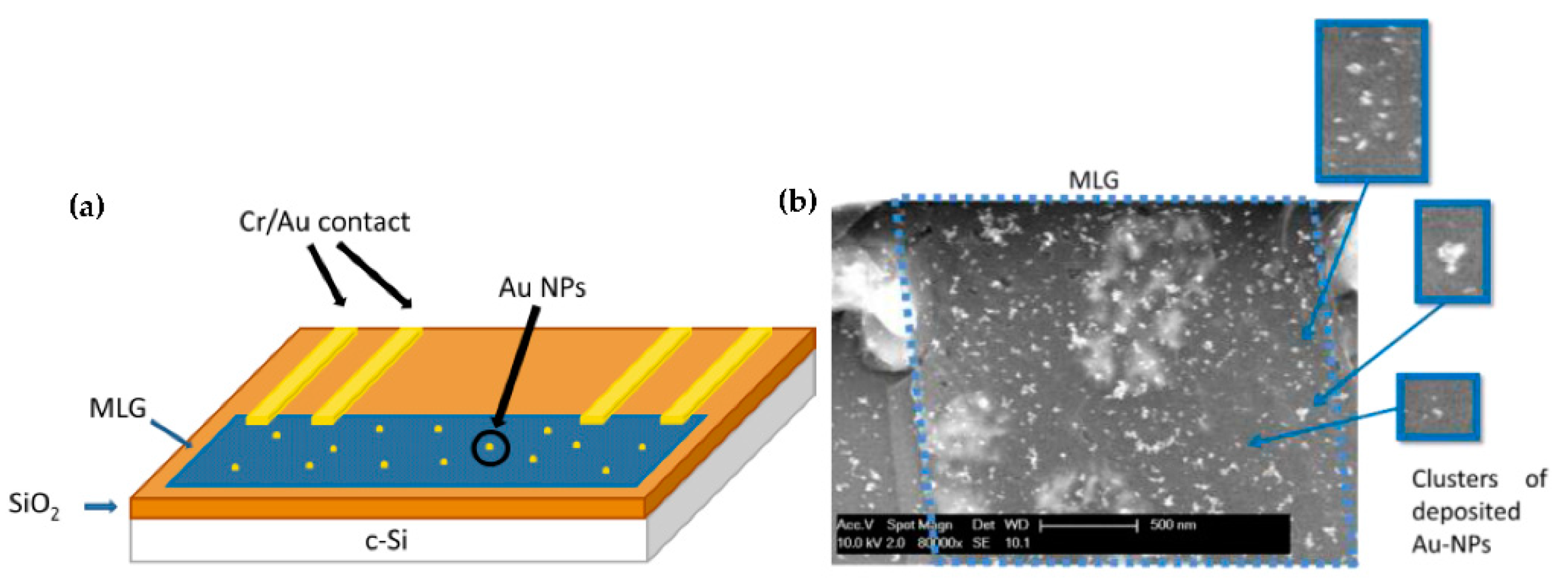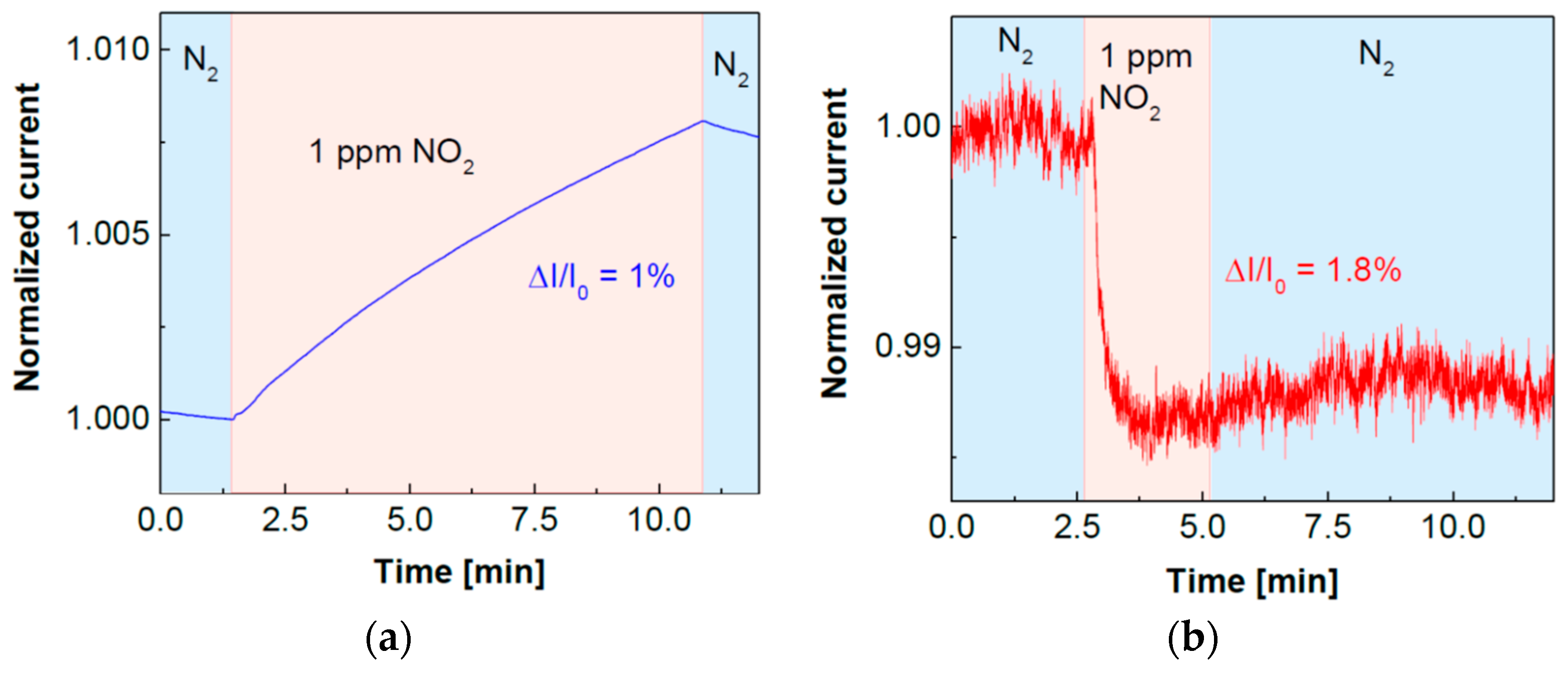Functionalisation of Multi-Layer Graphene-Based Gas Sensor by Au Nanoparticles †
Abstract
:1. Introduction
2. Methods
3. Results and Discussion
References
- Eriksson, J.; Puglisi, D.; Hsuan, Y.; Rositza, K.; Anita, Y.; Spetz, L. Adjusting the electronic properties and gas reactivity of epitaxial graphene by thin surface metallization. Phys. B Condens. Matter 2014, 439, 105–108. [Google Scholar] [CrossRef]
- Wu, Y.; Jiang, W.; Ren, Y.; Cai, W.; Lee, W.H.; Li, H.; Piner, R.D.; Pope, C.W.; Hao, Y.; Ji, H.; et al. Tuning the Doping Type and Level of Graphene with Different Gold Configurations. Small 2012, 8, 3129–3136. [Google Scholar] [CrossRef] [PubMed]
- Vollebregt, S.; Alfano, B.; Ricciardella, F.; Giesbers, A.J.M.; Grachova, Y.; van Zeijl, H.W.; Polichetti, T.; Sarro, P.M. A transfer-free wafer-scale CVD graphene fabrication process for MEMS/NEMS sensors. In Proceedings of the 29th IEEE International Conference of Micro Electro Mechanical Systems, Shanghai, China, 24–28 January 2016; pp. 17–20. [Google Scholar]
- Ricciardella, F.; Vollebregt, S.; Polichetti, T.; Alfano, B.; Massera, E.; Sarro, P.M. High sensitive gas sensors realized by a transfer-free process of CVD graphene. In Proceedings of the IEEE Sensors, Orlando, FL, USA, 31 October 2016; pp. 697–699. [Google Scholar]


Publisher’s Note: MDPI stays neutral with regard to jurisdictional claims in published maps and institutional affiliations. |
© 2020 by the authors. Licensee MDPI, Basel, Switzerland. This article is an open access article distributed under the terms and conditions of the Creative Commons Attribution (CC BY) license (https://creativecommons.org/licenses/by/4.0/).
Share and Cite
Morelli, L.; Ricciardella, F.; Koole, M.; Persijn, S.; Vollebregt, S. Functionalisation of Multi-Layer Graphene-Based Gas Sensor by Au Nanoparticles. Proceedings 2020, 56, 1. https://doi.org/10.3390/proceedings2020056001
Morelli L, Ricciardella F, Koole M, Persijn S, Vollebregt S. Functionalisation of Multi-Layer Graphene-Based Gas Sensor by Au Nanoparticles. Proceedings. 2020; 56(1):1. https://doi.org/10.3390/proceedings2020056001
Chicago/Turabian StyleMorelli, Laura, Filiberto Ricciardella, Max Koole, Stefan Persijn, and Sten Vollebregt. 2020. "Functionalisation of Multi-Layer Graphene-Based Gas Sensor by Au Nanoparticles" Proceedings 56, no. 1: 1. https://doi.org/10.3390/proceedings2020056001
APA StyleMorelli, L., Ricciardella, F., Koole, M., Persijn, S., & Vollebregt, S. (2020). Functionalisation of Multi-Layer Graphene-Based Gas Sensor by Au Nanoparticles. Proceedings, 56(1), 1. https://doi.org/10.3390/proceedings2020056001




